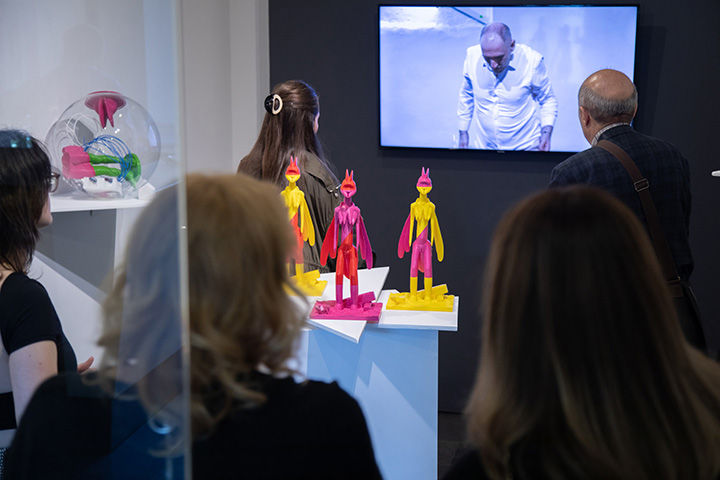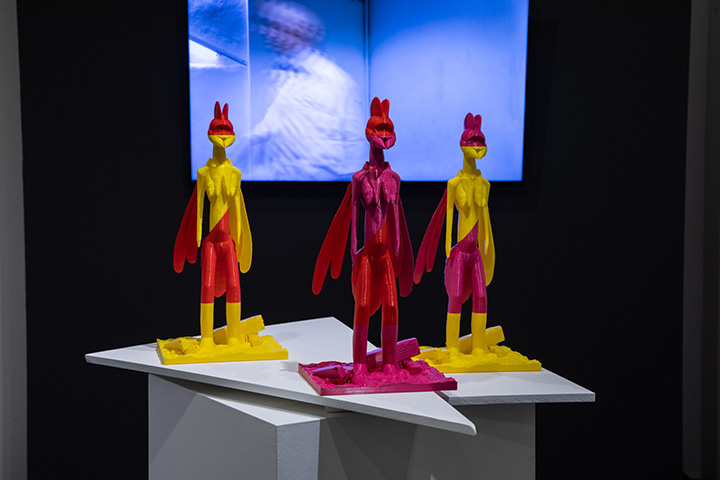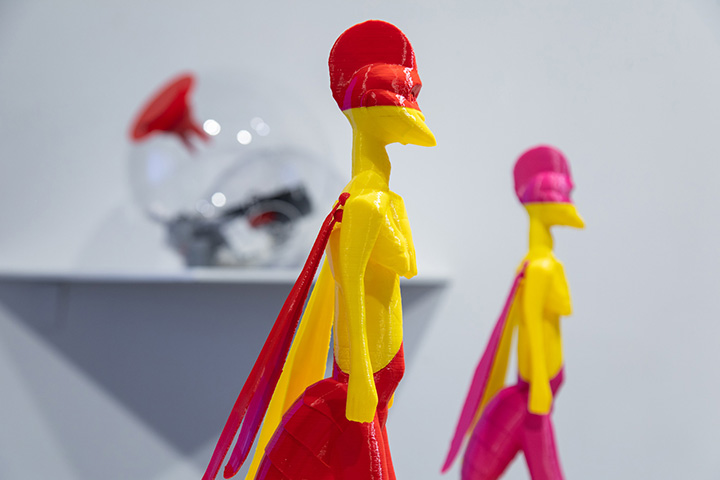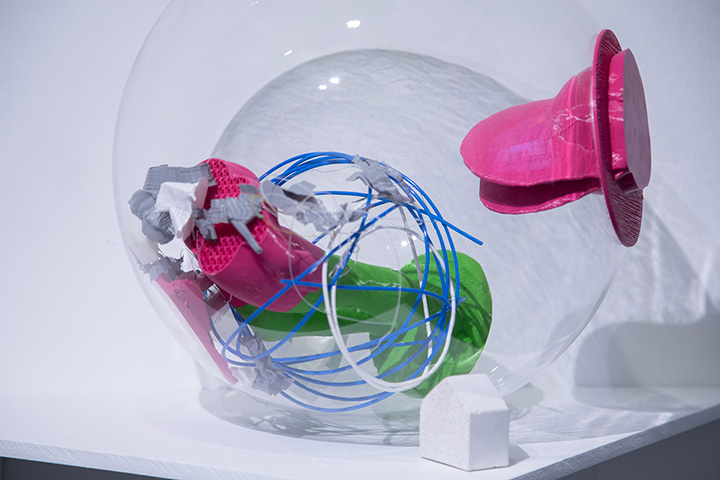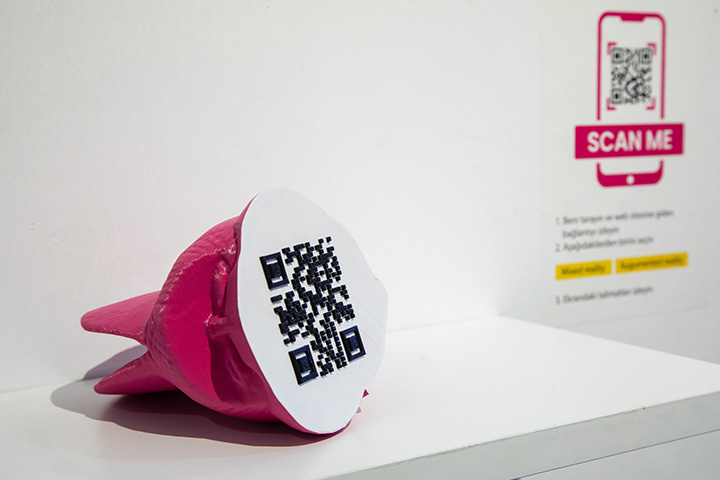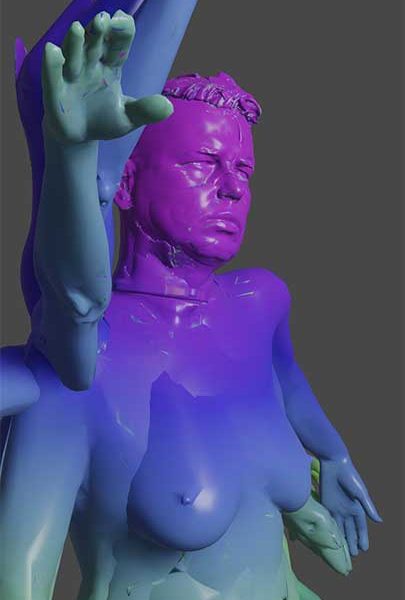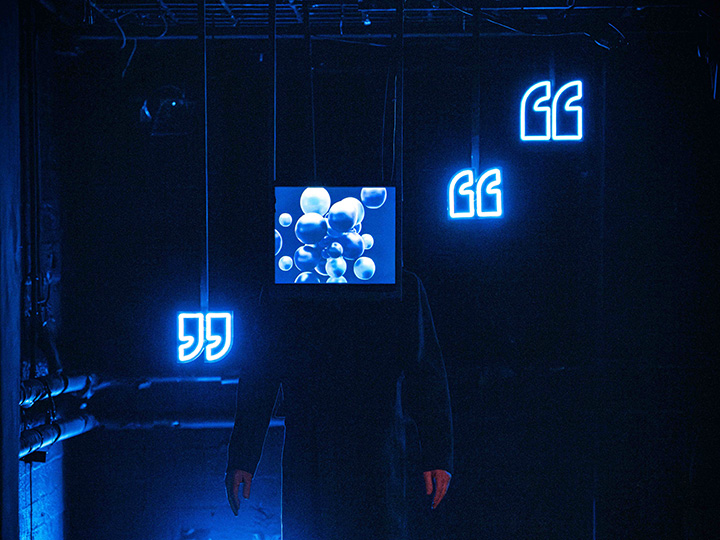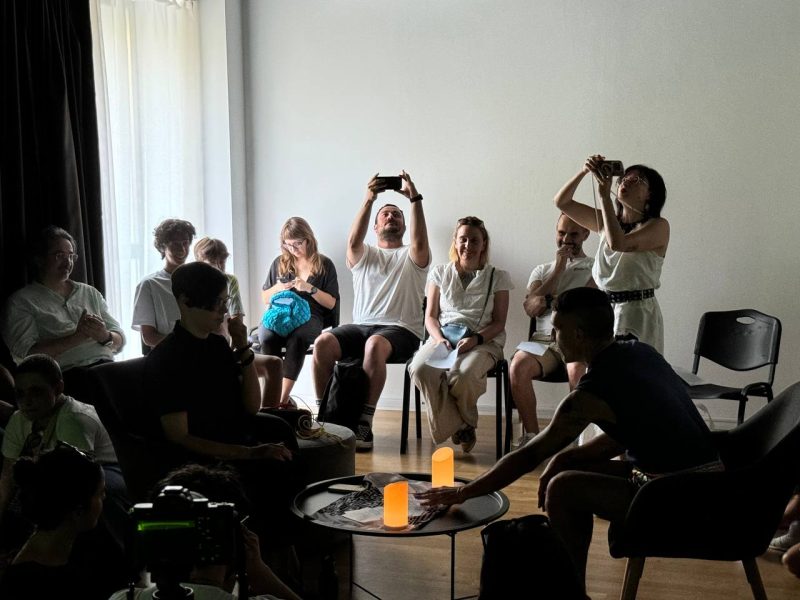curated by Firat Arapoğlu1
photos by Bojana Dimitrova
A solo exhibition, Collect Gallery, Istanbul
6 April – 6 May 2024
With special participation of Korhan Bassaran, Ivan Shopov and Osman Nuri Iyem
“Fire” 2 is a French word meaning “that which is destroyed, missing, or lost.” It is derived from the French word “feu,” which in turn developed from the Latin word “focus,” meaning “fire” or “hearth.” When it is used as “waste” in Bulgarian and Turkish, it usually means that something is missing, lost, or damaged. An example is “there is waste in a production or the products of this production.”
So, how can this word be used as a metaphor to interpret our age? For example, is it a “waste” when some values disappear or are replaced by other values in modernization? Or the difficulties in preserving cultural identity? Isn’t the loss and destruction caused by political conflicts, wars, or social unrest in the current era a “waste”? Or can global economic losses, unemployment, and poverty in a capitalist age gone mad be related to the concept of “waste”?
In her exhibition titled ‘Fire,’ Albena Baeva skillfully challenges our understanding of the concept by placing wasp queens at the forefront. The Wasp sculpture series is a powerful testament to the artist’s adeptness in engaging with pressing contemporary issues. By fusing primitive female sculptures with the presence of a wasp brought to life through modern 3D printing technology and living PLA plastic, Albena Baeva invites viewers into a realm where past and present converge, shedding light on the intricacies of our ecological and social landscapes.
The juxtaposition of form and materials in Albena Baeva’s exhibition is visually striking. The gentle curves of traditional female sculptures starkly contrast with the bold lines of the wasp. The choice of materials serves as a stark reminder of the environmental consequences of modern industrial practices. The vibrant colors, such as yellow, red, and magenta, inject a sense of dynamism, compelling the viewer to engage with the sculptures.
Albena Baeva’s work is not merely a reflection on the past or contemplating the future. It is a call to action, exploring the themes of ecological imbalance and human intervention in the natural world. With its strength and endurance, the wasp is a metaphor for the complex web of interdependence between species and ecosystems, a reminder of the urgent need to address the consequences of our actions on the environment.
By recontextualizing these forms in a contemporary framework, the series bridges the gap between past and present and compels a reevaluation of historical narratives and their significance in our modern world. It resonates with themes explored in Donna Haraway’s writings, particularly the concept of the cyborg as a symbol of hybridity and resistance. Her 3D prints contribute to ongoing debates about the role of technology in contemporary art and its potential to reflect and critique social norms while engaging with timeless questions about the nature of representation and power dynamics in the art world.
On the other hand, Baeva’s spheres filled with plastic waste represent the accumulation and environmental impact of technological waste and harmful waste in general. The 3D-designed wasp heads symbolize the destruction of nature and wildlife by humanoids. This emphasizes how human impact affects natural life and disrupts the ecological balance. It also reflects the damage caused to nature by plastic waste. It also shows the effects of technology on natural life and the conflict between nature and technology. This suggests how people’s dependence on technology affects the natural world and how this effect could pose a threat in the future.
Baeva reflects the contradictions of today’s society and culture and shows the deterioration of the natural balance and the deepening of ecological problems by making the increasing plastic waste visible with technological developments and consumption habits. This situation affects people living in developing countries and their natural lives more, which deepens inequalities.
Humanity’s impact on nature and the environment has been increasing since the Industrial Revolution. Industrialization has led to the rapid depletion of natural resources and increased environmental pollution. Economically, the spread of consumer culture and profit-oriented production has led to the unplanned use of natural resources and increased waste.
Through this series, Albena Baeva urgently calls on viewers not to be passive observers but to take action. She underscores the imperative to raise awareness and address the pressing issues of climate crisis, inequality, and natural life protection. She reminds us that individuals and societies bear the responsibility for sustainable living and environmental protection, and in this context, she enlightens us about crucial tools for social change and transformation.
